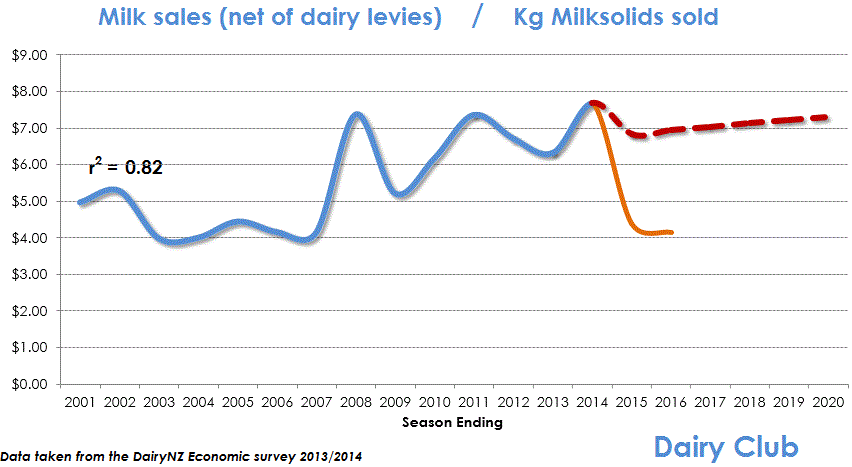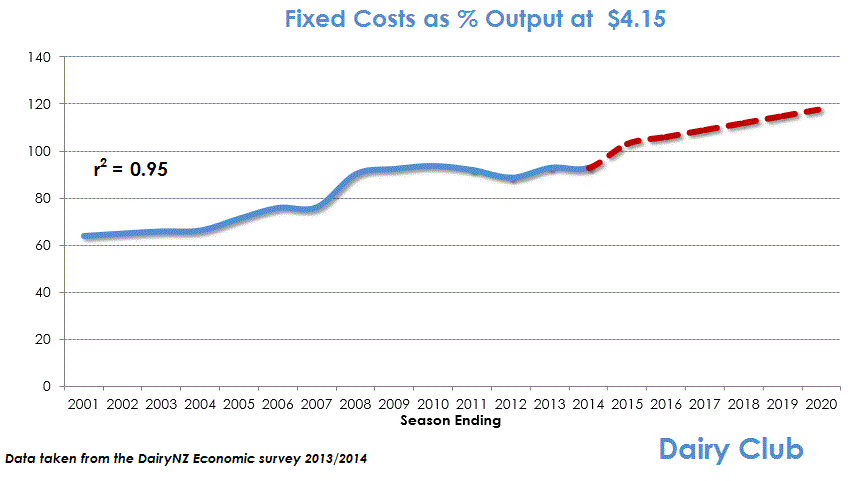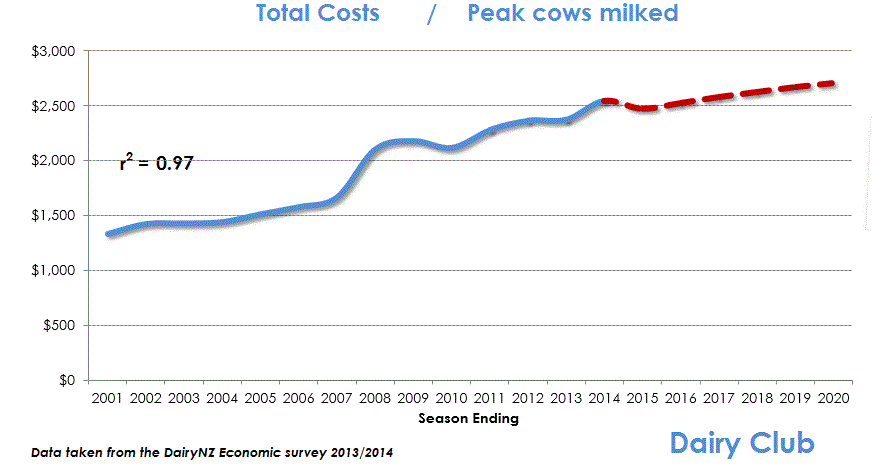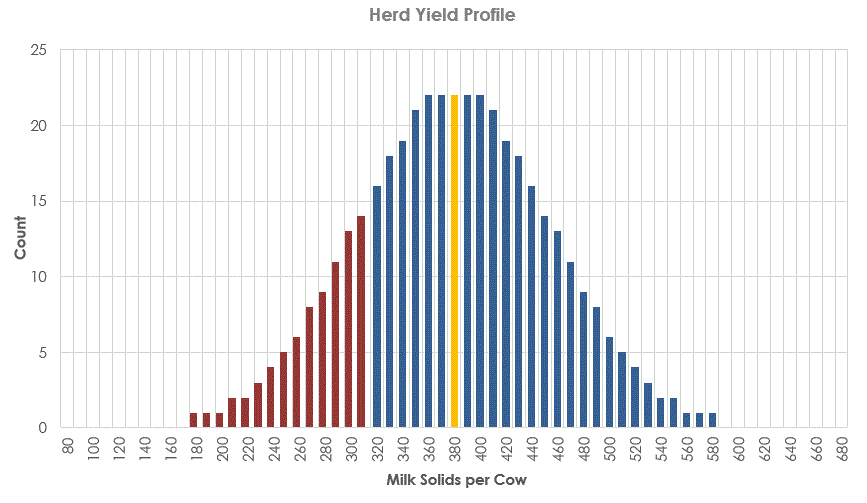If milk prices stay low for the next few seasons what do we do?
Looking back over the last 15 years at the DairyNZ Economic Survey data we can find a huge number of trends. These trends are mostly upwards, especially in costs, but also on milk income. The chart below shows the historical trend in milk income and forecasts forward an increasing price for milk, but things have changed, resulting in a dramatic drop and we have to respond swift but sure to this big drop.
Using the same data set from the Economic Survey, if we assume a $4.15 milk value over the period, our Fixed Costs have risen from 64% of income to over a 100% in 2015 (Assuming an average 6.25% interest rate on debt). It is the fixed costs that need to be diluted. Remember, these do not include any of the usual inputs of fertiliser and feed. So even before spending money on inputs, the economics of the average farm show a fundamental issue with a lack of dilution of these costs.
Fixed Costs should be reviewed. For some farm businesses these could be reduced or rationalised. Some actually need more infrasturcture to be truly sustainable. However you treat Fixed Costs it is worth thinking about the short term, medium term and long term implications of any shift in the current position.
So what costs are contained in Fixed Costs. The chart below shows the breakdown of these costs.
The biggest by far is interest. This will be different for everyone and it is important to look at your own figures, but here we are using the average. It is well worth reviewing all assets in the business and, anything that is not essential and is making a return less than the interest rate being paid, should be reviewed as having the potential to be sold to reduce debt.
Labour is split in two parts – Paid Wages and Labour Adjustment. Labour adjustment is paying for family/own labour accounting for the hours, skill and effort that you put in. It is not a cash cost but reflects your unpaid investment into a business. So can you do without labour, or do you actually need more to be sustainable?
Repairs & maintenance – This cost could be split further into essential and non-essential. How much of this cost can be postponed till things brighten up?
Depreciation – If monies are not put aside for the replacement of infrastructure and plant then the business can start to rot (for want of a better word). It is wise to create a schedule of all infrastructure and plant and work out an essential replacement schedule.
The survey data can also be used to look at the average Total Cost per Cow in the herd. This is a very simple metric, but using the data below we can see that the average Total Cost per Cow milked is around $2,500 now and will rise to around $2,700 by 2020 if we don’t change route.
Simply dividing this by an income of $4.50/kgMS (Milk+stock sales) means that by 2020 in New Zealand we need to be achieving on average around 600KgMS per cow to cover these costs and breakeven.
With the national average currently sat at around 380kgMS this will require a massive shift in management. It is very unlikely that grass alone can support an average milk yield of 600KgMS, so good feeds, feeding skills and cows are going be needed more now than ever before.
In New Zealand cows need to be achieving around 600KgMS per cow
Are our cows up to it..?
The chart below graphs a herd profile based on an average herd. It shows the yield distribution of a herd with an average yield of 380KgMS and herd size of 420 cows.
The red bars indicate the number of cows below 310KgMS, which in this case is 80 cows. These 80 cows average just 275KgMS, which at a $4.00 payout would generate just $1,100 of income. If these cows had typically used 5,000KgDM each, at a cost of 20c/kgDM, then their income would just about cover their feed costs!
If we were to remove these 80 cows from the herd (a 21% reduction) the rest of the herd would need to increase yield by 65KgMS to maintain the total milk output . This means that the herd average would be 467KgMS, which is still only 97% of the cows liveweight in solids. Many herds are achieving 100-120%, so this target is very achievable. The reduction in cows would reduce variable costs and release capital to reduce debt or provide working capital.
With 80 cows less there would be 400tDM (80 x 5,000kgDM/cow) of feed freed up to put into the rest of the herd. This is more than a tonne DM a cow! It would ensure that there was sufficient stockpiles of feed to ride out a long drought making the whole farm system far more sustainable and robust. The ‘all grass’ model is hugely susceptible to the whims of weather and there is too much risk. Imagine a $4.00 payout and drought for two years running…
There are also environmental and labour benefits to fewer cows in the herd. Having 80 cows less would knock maybe 20 minutes off per milking, providing 40 minutes per day for other jobs. This could be valuable management time spent on finding more efficiencies, fast tracking you towards a more profitable and sustainable future.





